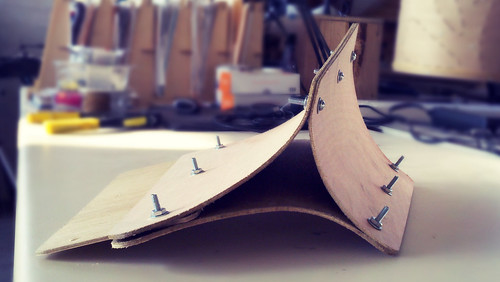Hey all, its been awhile since I last updated you on my thoughts...sorry life has been busy.
Anyway here is an example of A-periodic Tiling/Packing. I'll be honest, I was seduced/introduced to this type of tiling while working with Marc Fornes & THEVERYMANY. Sadly for me I was never given the opportunity to work on any projects related to these tiles....well until now.
"Let me first say I do my best not to copy what he's done...but after testing this tiling out i've found it hard to define my own "unique" tile. he's done too many different types...SO I started testing different types of orientation/configuration of the tiles inside and what geometry one tile consist of. One difference is that I don't quite need all the left handled tiles....we'll talk about after I finish my new sets of prototypes!"
Project 3 at UCLA: Bending space.
![2[D]Aperiodics:v1](http://farm8.staticflickr.com/7165/6402400267_abe883debb.jpg)
Cluster *clean connections...but only for one set so far...
![1[D]Aperiodics:v1](http://farm8.staticflickr.com/7022/6402400373_8427e34395.jpg)
Cluster4
What does this mean? well...this is about research/development and not about experience....yet hinting about experience these pockets contain a good opportunity for people to start occupying different types of spaces.
[Next developments I still need to update you on are Voxels/Recursive logic and twisted grids.! oh my!]
![[A]logicPattern:v1](http://farm9.staticflickr.com/8356/8344230782_36d8f819d8.jpg)






![2[D]Aperiodics:v1](http://farm8.staticflickr.com/7165/6402400267_abe883debb.jpg)
![1[D]Aperiodics:v1](http://farm8.staticflickr.com/7022/6402400373_8427e34395.jpg)

